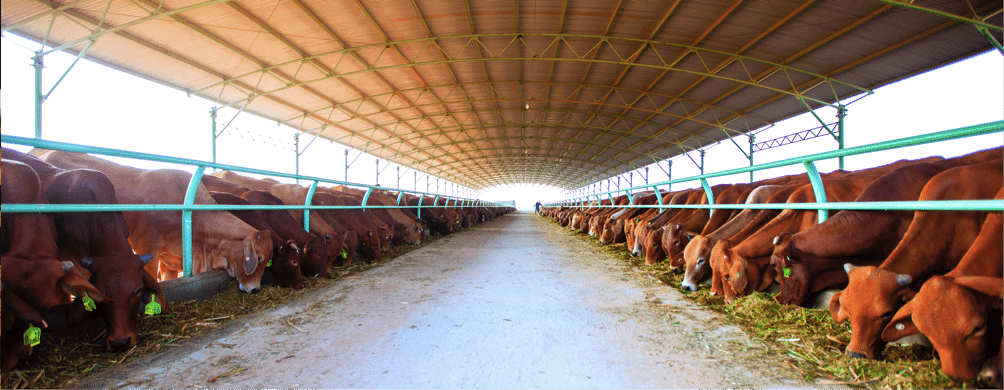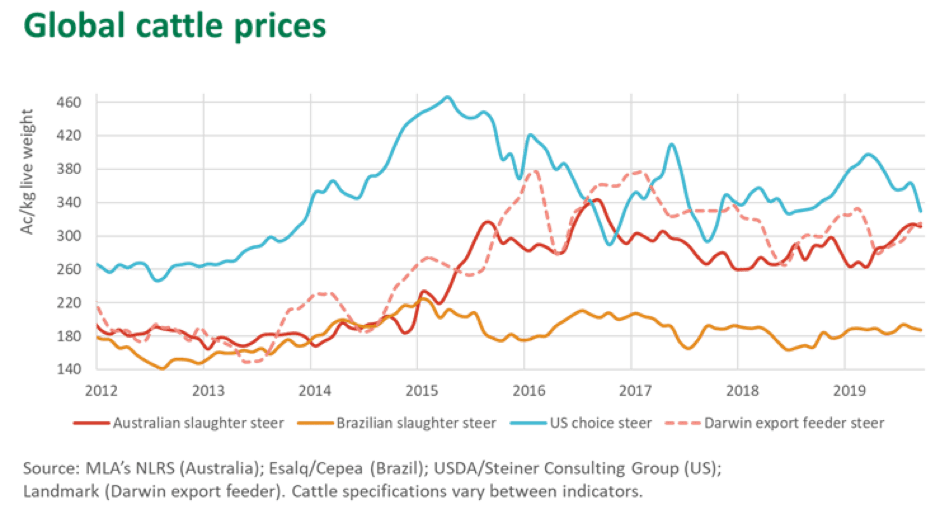WITH expectations Brazil will soon gain formal access to Vietnam for live cattle exports, possibly by December, attention is turning to how that could impact Australia’s strong and important cattle trade with the South East Asian nation.
Vietnam is Australia’s second largest market for live cattle, with exports to the country rising 30 percent this year to 181,598 head from January to September (or 244,418 for the 12 months since September last year, which is up 39 percent).
80 percent of Australia’s exports to Vietnam this year have been slaughter-weight cattle sourced from Central and northern Queensland and the Northern Territory, and 20pc (49,000 head) are feeders – a market also seen to have strong growth potential in future (more below).
Australia’s annual cattle exports to Vietnam grew from almost nothing in 2012 (3,353 head) to a massive 362,248 head in 2015. However exports have eased back to around 200,000 head per year since then, largely as a result of the sensitivity Vietnamese importers have had to the higher price of Australian cattle since that time.
A general lack of cattle and the recent spread of African Swine Fever in Vietnam and neighbouring Asian countries has resulted in stronger cattle prices for slaughter cattle in Vietnam which has supported the recent resurgence in trade volumes this year.
Australian exporters have invested heavily in building trade relationships with Vietnamese customers to build welfare standards and throughput capability and efficiency of Vietnamese supply chains.
The LIVEXchange 2019 conference in Townsville yesterday heard that pre-slaughter stunning which was introduced to Vietnam by Australian exporters is now common place in abattoirs throughout the country, with the practice now used on local as well as imported cattle.
While Brazil’s Foot and Mouth Disease (FMD) status is a barrier to gaining access for live cattle exports to Indonesia, which has its own herd of 10-12 million cattle and is FMD free, Vietnam is already endemic with FMD.
It seems likely Brazilian exporters will be able to compete with Australian exporters on price when they gain entry to the trade.
Brazil has much further freight distances and transport costs to Vietnam than Australia, also faces a 5 percent import duty on its cattle.
However, its cattle are cheaper than Australia’s due largely to a significant decline in its currency (see MLA chart below)
Another key point is that Brazilian exporters do not have the same costs of maintaning the high animal welfare standards Australian exporters do.
MLA believes Brazil could potentially land slaughter cattle in Vietnam at a price below that of Australian slaughter weight cattle.
Brazil is also already well geared toward exporting cattle, and shipped 527,000 cattle to the Middle East in the past 12 months.
Potential impact
Live cattle exports from Brazil clearly have the potential to significantly disrupt what has grown to become a large and valued live cattle trade for Australia, and understandably, the question of how big that impact may be was front of mind in questions from the floor at the LIVEXchange Conference in Townsville on Wednesday.
MLA livestock services manager – South East Asia, Michael Patching, said there was very little doubt Brazil will soon get access for live cattle to Vietnam.
He said Australia will have to lean on its point of difference in the market which is the quality and consistency of its cattle.
He explained that the regional supply of cattle in the region is based on trading cattle which resulted in variable quality, size and volumes on a daily basis.
Australian cattle provided Vietnamese feedlots and abattoirs the advantage of having a readily available source of animals that are healthy and of the same quality and same consistency.
Australian exporters and industry supported programs have been investing in training and infrastructure to support abattoir owners to increase throughput in their abattoirs and build more sustainable businesses.
Many abattoirs that were processing only five to 10 cattle when Mr Patching first arrived in Vietnam five years ago are now processing 50 head a night, with some now handling as many as 200 head a night.
“So there is a massive shift in the market, and that is because cattle are now readily available (from Australia) and buyers rely on abattoirs to consistently have those cattle.
“In Vietnam throughput is a key so building throughput in abattoirs is really important both from a food security and from an animal welfare perspective, because we have less facilities to look at which is easier to monitor, but also from a profitability perspective because of efficiencies of scale.
“A lot of that work now is to build throughput through those facilities and definitely are investing with exporters to do that.”
Can Brazil piggyback on Australia’s hard work in Vietnam?
A producer questioned from the floor if that meant Brazil could now come in and ‘piggyback’ on the hard work and investment Australia has made.
“The quick answer is if we were always worried about somebody piggybacking on the good work that you do, you wouldn’t do any work,” he said.
“We need to be doing the work, there is no doubt about it.”
Mr Patching said the investment by Australian exporters and industry to build animal handling capability, training and throughput had also created a relaince on Australian cattle in those supply chains.
Exporter Justin Slaughter from Austrex told an earlier session in response to a question that Australia’s cattle export trade will inevitably face more competition in South East Asian markets.
He said that Australia’s higher animal welfare standards did add cost to the supply chain that competing exporters did not face, but distance and freight costs would present a significant challenge to the viability of Brazilian exports in Vietnam.
“When you are operating a feedlot, for Brazil to be efficient they have to take a vessel of maybe 15,000-20,000 head,” he explained.
“To take a vessel of 15,000-20,000 head if you have a feedlot, you have to empty that feedlot.
“That actually is not efficient and it costs a lot of money when you do that.
“It is better to have regular deliveries of smaller numbers of animals.”
Mr Slaughter said Australian exporters can focus on working with their partners in Vietnam to demonstrate the benefits of the partnerships they have developed in the market.
“I think, in the majority, our partners understand it is important what we’re trying to do,” he said.
“Minister McKenzie was up there recently and signed an MoU with the Vietnam Government on improving welfare and potentially building a traceability system which is a great opportunity for Australia to further engage with that market.
“I think we just have to be confident in what we do.
“Also there is no substitute for Australian cattle, they’re going to be much better.”
Feeder opportunity
Mr Patching said there is also an opportunity for Australia to also work to build feeder cattle exports to Vietnam.
MLA and LiveCorp, through the work of the Live Export Program (LEP), are currently also working with supply chains in Vietnam to understand business models and development bottlenecks to develop specific programs to promote an increase in throughput through select key facilities.
As detailed in an earlier article this week, the LEP has already demonstrated that this approach creates reliance on Australian cattle, as they provide consistency and predictability that is a point of difference to sourcing cattle locally.
Increasing throughput also creates an efficiency of scale and provides a platform to add value to either select cuts or individual animals, which is needed for Australian cattle to be differentiated from beef from local or Brazilian cattle.
Mr Patching said developing the feeder market in Vietnam was a challenging area but also a huge potential opportunity.
“If we get feeders into Vietnam then we won’t have to worry about competitiveness with Brazil,” he said.





The shortest sea link from Brazil to Vietnam is around 10,000 nautical miles via the Cape of Good Hope, or 40 days at sea.
Where do the Australian animal welfare groups sit on this one?
Faint hope they’ll come out in support of all the good work the Australian industry has done.